by Peter Robinson
Volkswagen – the People’s Car – remained true to this humble philosophy throughout its existence. At least until 1997 and the arrival of a series of W12 concept supercars in 1997 that didn’t look much like cars for the people. Few thought VW boss Ferdinand Piech was serious about taking on Ferrari with a W12. But Piech, being Piech, was deadly serious. He remained that way until VW gained control of Lamborghini in 1998 when, sadly, the gorgeous Giugiaro-styled supercar project was cancelled.
Two years later came another VW concept that took the People’s Car into a segment it had never before dreamed of entering. The Concept D luxury hatchback was unveiled during the 1999 Frankfurt show and VW made no secret that this large – over five metres long – hatchback was the precursor to a new luxury saloon aimed directly at the Mercedes S-class. So, no flash-in-the-pan concept, but a near wholly realistic prototype of the limousine VW planned to launch in 2002.
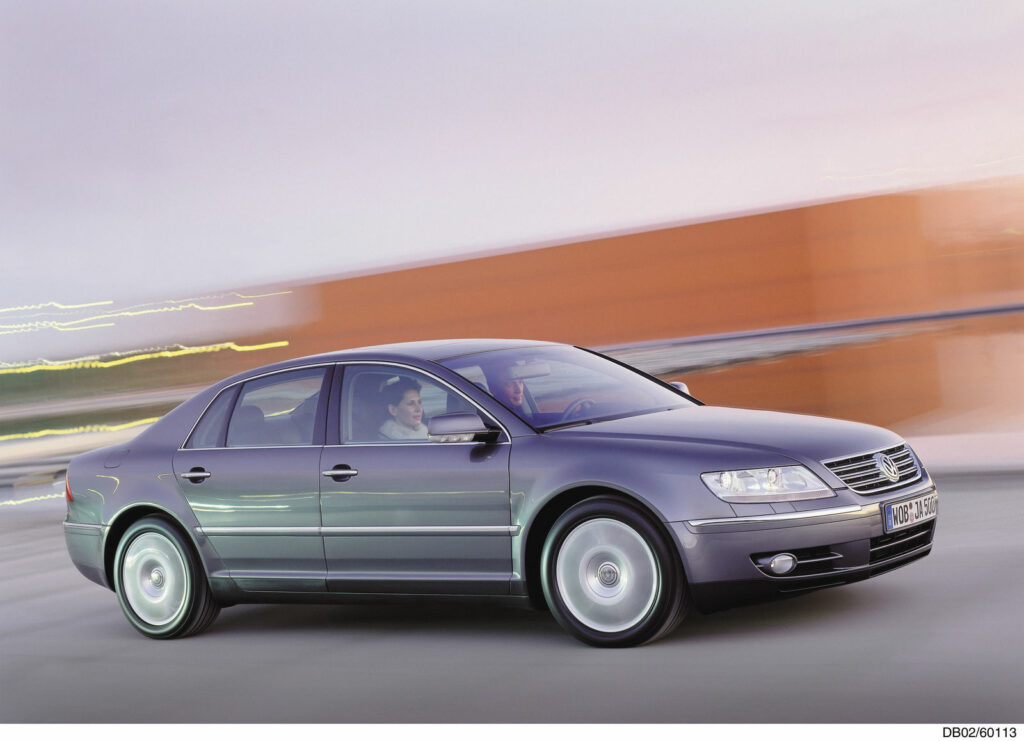
Nobody believed Piech, as ruthless as he was ambitious, when the CEO of the VW Group first talked of moving populist VW upmarket to compete against Mercedes-Benz with the Phaeton sedan. But then who would seriously have expected a senior member of the Porsche family to announce plans for Audi to challenge Porsche at Le Mans?
Mercedes-Benz only had itself to blame for VW aiming to encroach on the stratosphere, once almost the sole preserve of the S-class. In 1994 Stuttgart confirmed that Mercedes intended to build a production version of Vision A (later the A-class), its radical small car concept, priced directly against the VW Golf. Piech reacted angrily. If Mercedes-Benz was prepared to stretch its brand down as far as the Golf, then VW would build an S-class. This despite already having a rival in the in-house Audi A8.
So Piech devised a plan to reconfigure the Volkswagen Group hierarchy of marques: Audi would be explicitly aimed at BMW as the sporting option, while Volkswagen would be elevated and targeted directly against Mercedes-Benz as the luxury choice via the development of a luxury saloon to challenge the S-Class. Skoda would assume the role as the value brand.
The Phaeton was so close to being a great car, a superbly engineered, almost shockingly well equipped, work of genius. Piech famously demanded his engineers build the best car in the world and they may have done just that. To sell the idea of a luxury VW, a normally press-shy Piech was keen to explain his proposal to a group of journalists at the 1999 Frankfurt show.
“I’ve set the engineers a target: I’ve told them the D1’s (code-name for the Phaeton) cabin must be able to maintain 22 degrees in 50 degree outside temperatures while being driven all day at 300km/h (186mph).”
It was Piech’s answer to the next question that left us even more incredulous.
“What happens,” we asked, “if the engineering team can’t deliver?”
“Then I will fire them all and bring in a new team and if they tell me they can’t do it, I will fire them too.”
Targets apparently achieved; the Phaeton was launched at the 2002 Geneva Motor Show. Its mechanical specification was a tour de force: it was initially offered with a choice of three petrol engines, a 3.2-litre narrow-angle VR6, a 4.2-litre V8, or Volkswagen’s imposing 6.0-litre W12. (Later came a V10 turbo diesel and a 2.5-litre diesel, plus a six-speed automatic that replaced the original five-speed ZF.) All connected to a Torsen differential-based permanent four-wheel drive system. Adaptive air suspension and cruise control with radar activated distance regulation was standard, as was draught-less, four-zone air-conditioning with no visible vent outlets in the dashboard.
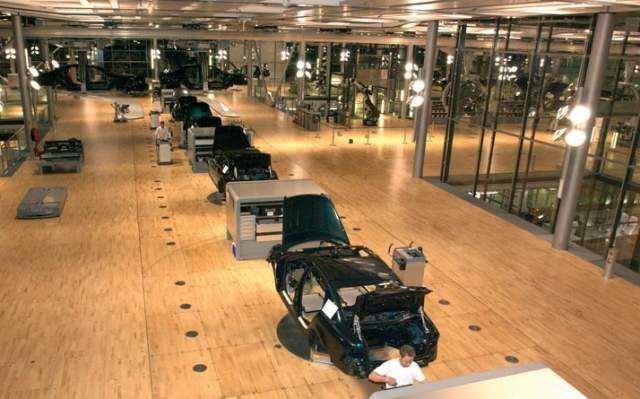
The Phaeton came in two wheelbase lengths: a standard 2881mm model and an elongated version with a 120mm stretch behind the B-pillar for limousine rear legroom. To validate the car’s quality, Volkswagen built a new showpiece glass-walled factory in Dresden, with superb Canadian Maple floors, where the Phaeton was almost hand-assembled. Prospective buyers were invited to view the work in the clinically clean and pristine facility. The factory’s initial annual capacity for 20,000 was planned to increase to 35,000.
In May 2002, as part of the first wave of journalists to drive the production Phaeton, I wondered how even this mega-VW could possibly live up to the hype. The answer came immediately: upon turning the key it was only after looking at the rev counter, needle fixed at a constant 640rpm, that I realised the engine was alive. The 414bhp W12 was so hushed the engineers realised first-time drivers were likely to think the car had stalled, so they developed a system that prevented the electronics from engaging the starter motor if the engine was running. Among the Phaeton’s rivals, only a Lexus LS430 could claim an engine that approached this level of quietness. Even at 80mph – 2500rpm – the engine remained unheard over the hum from the 255/45 Bridgestones.
Sumptuous and silent, swift and serene, the Phaeton was more hedonistic wafting device than sporting limousine, closer in character to an S-Class than a 7-Series. The driver, isolated from the action, was soon aware the car was quicker than it felt. Yet, despite the lightness of the controls, there was also a perception that the Phaeton was a heavy car. All the toys: the all-wheel drive, the numerous measures to achieve the near-silent running and, unlike the aluminium A8, the largely steel construction, meant the truly immense 2319kg W12, was heavier than all its rivals.
My first drive story concluded, “The Phaeton immediately establishes its credibility. But is that going to be enough to tempt luxury car buyers away from their Mercedes S-Class and BMW 7-Series? We’re about to find out how important a badge is, but don’t allow any prejudice to get in the way. If the quality and beauty of the aluminium hinges on the boot lid are typical, the Phaeton’s peerless build quality is now surely, VW’s luxury car benchmark.”
A month later we drove the front drive 3.2-litre V6 (the first occasion when the V6 was mounted longitudinally) and suggested you “disregard the badge…it never feels like an entry-level model”.
To achieve this quality the Phaeton had been put through VW’s prototype testing regime like no other model in the Group’s vast range. Instigated by Piech when he was head of Audi R&D in the 1980s, the prototype drives took place six times a year in Finnish Lapland for cold weather testing, and South Africa and the Middle East for hot weather testing. Attending were board members, senior engineers, product planners, production people and quality managers. It was an opportunity to get away from meetings, the phone and the office. To quote Piech, “to get some real work done.”
They were big events, organised by a dedicated department which flew the cars out, arranged flights, hire cars and accommodation for the well over 100 participants. You didn’t get invited, you just received a list of participants, and if your name was on it, you went.
Some prototypes, modified from the previous event, appeared in several later tests. As one participant told me it was, “Fascinating to see something evolve from an early prototype to final sign-off.”
One insider recently told me, “After Piech’s departure as CEO in 2002, Martin Winterkorn went to Audi and Bernd Pischetsrieder became the VW boss, and the development focus was slimmed down. When Winterkorn returned from Audi, the procedure took on its old form again. There were then large and small (testing) rounds, but Winterkorn was on the road one or two days a week with engineers testing and refining vehicles.” Today VW’s development process relies heavily on computers and the old testing regime is much reduced.
In late 2001, Piech was sufficiently confident in his car to invite European Car of the Year judges to one of these test sessions. Autocar’s editor-in-chief Steve Cropley remembers, “Piech himself was the leading light. It was in Finland at some snowy test track, the driving mostly at night.
“The idea was to drive the car on icy, wintry, rutted tracks and compare the Phaeton with other luxury saloons along for the exercise, notably a BMW 7-Series. Of course, the Phaeton was miles better than the rest on traction grounds because of the 4wd. I recall thinking that the BeeEm steering was better. The Phaeton was very rigid in the body and felt well-built, another thing Piech was trying to demonstrate.
“We had a yarn with Piech. He was very proud of the car and reckoned it a bigger achievement than the car everyone knew him best for – the Porsche 917 – he saw the Phaeton as the greater engineering endeavour, given its versatility and refinement.
“The exercise was bizarre, but the car was very good – and it really, really mattered to Ferdy that the hack brigade should by impressed by it. Seemed funny. I had the impression he was usually so sure of himself he didn’t give a damn what journalists thought.”
However, journalistic praise and all VW’s engineering expertise counted for nothing. What Piech failed to anticipate was that despite the all-round brilliance, the Phaeton couldn’t overcome the world’s badge snobbery. Few people wanted to buy a money-no-object luxury car wearing a Volkswagen badge on the nose. The Phaeton turned out to be the best engineered failure in motoring history.

Two decades of hindsight prove that both the Phaeton and the A-class were a step too far. The Phaeton died in 2016 when VW chose not to go ahead with the fully-developed second generation – one casualty of the diesel scandal, but also of disappointing sales – while Mercedes has confirmed that the current A- and B-class models won’t be replaced. This decision, part of the move to an electric future, also appears to have been made because Mercedes now admits that profits from the small cars didn’t justify the investment.
VW Australia brought two Phaetons into the country in 2003 to test market demand. Three years later Jutta Dierks, then MD, finally announced that the Phaeton was a non-starter here. “The (price) gap between the Passat and the Phaeton would have been too big.”
On March 18, 2016 the last Volkswagen Phaeton rolled off the line at the “Transparent Factory” in Dresden. In 15 years, VW built just 84,253 units. The car wasn’t the only casualty of the failure. When Axel Mees, Audi America’s boss, told a 2004 press conference that the Phaeton’s poor sales were due to VW, “underestimating the weakness of the brand”, he was immediately fired. Later, VW CEO Bernd Pischetsrieder pulled the Phaeton from the US market. He, too, was soon gone after total sales in the US reached just 3,354 cars in nearly five years. An analysis subsequently conducted by the Sandford C Bernstein investment research company estimated VW lost (US)$38,252 on every Phaeton sold.
When Volkswagen celebrated the 20th anniversary since the Phaeton’s debut the company released never-before-seen photographs of the near production ready second-generation car.
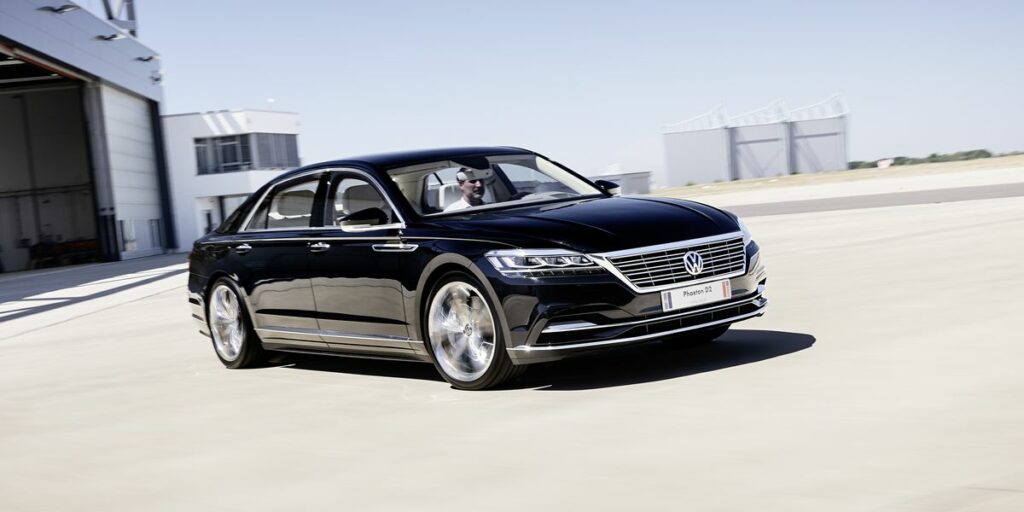
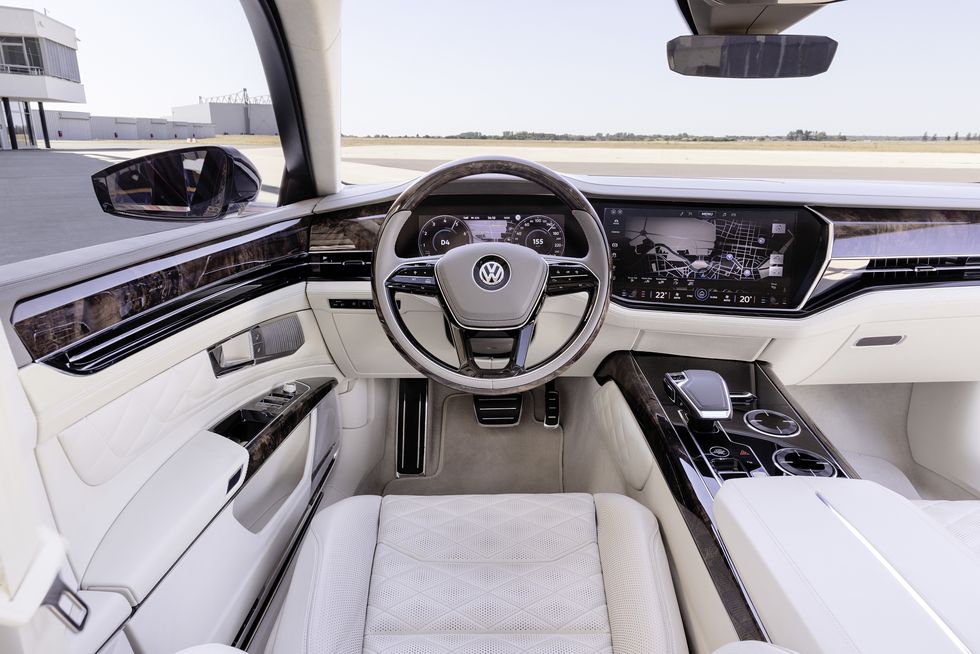
Compared to original car, this new Phaeton employed more bling – for China? – and was a sharper design, although some cues, such as the grille and thick C-pillar were carried through.
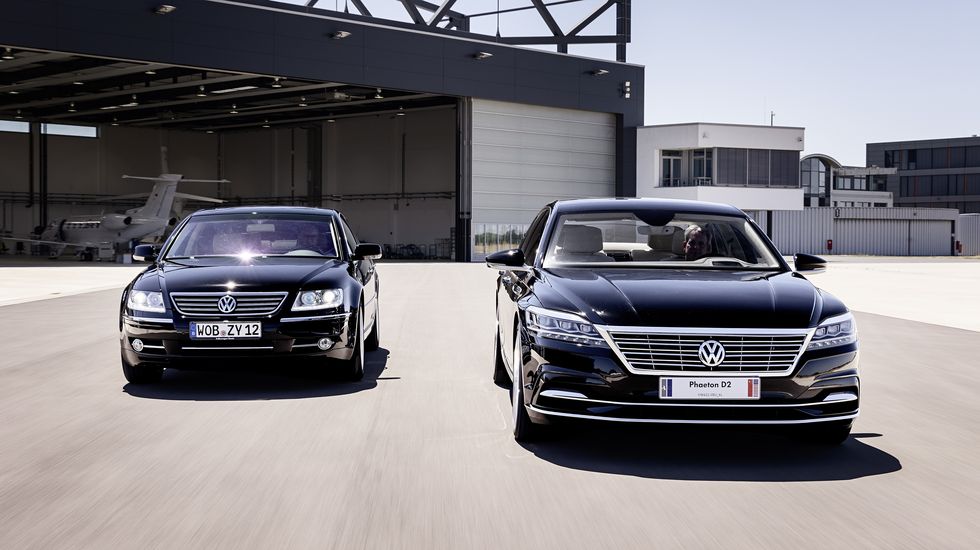
With its fully digital instrumentation, capacitive buttons, and a giant touchscreen for the infotainment and climate control systems, the second-generation car’s interior was from a different technological age. It was also obvious the Innovision-style cockpit used in the 2018 Touareg was also destined for the new Phaeton.
Although it’s based on the MLB front- and all-wheel drive architecture with longitudinal engines, used by models like the Audi A6, Volkswagen Touareg and Bentley Bentayga, VW didn’t reveal which drive trains it planned to offer. Production was officially called off in 2016 after the company decided to “focus on its electric mobility offensive”, following the Dieselgate emissions scandal revealed in late 2015.
Judged only by numbers the Phaeton is a failure, despite its success as a feat of engineering. The reality is VW’s People’s Car imagine could never reach the desired echelons, both against the internal competition and opposition rivals. The Phaeton remains as a monument to Ferdinand Piech’s unrestrained ego.

